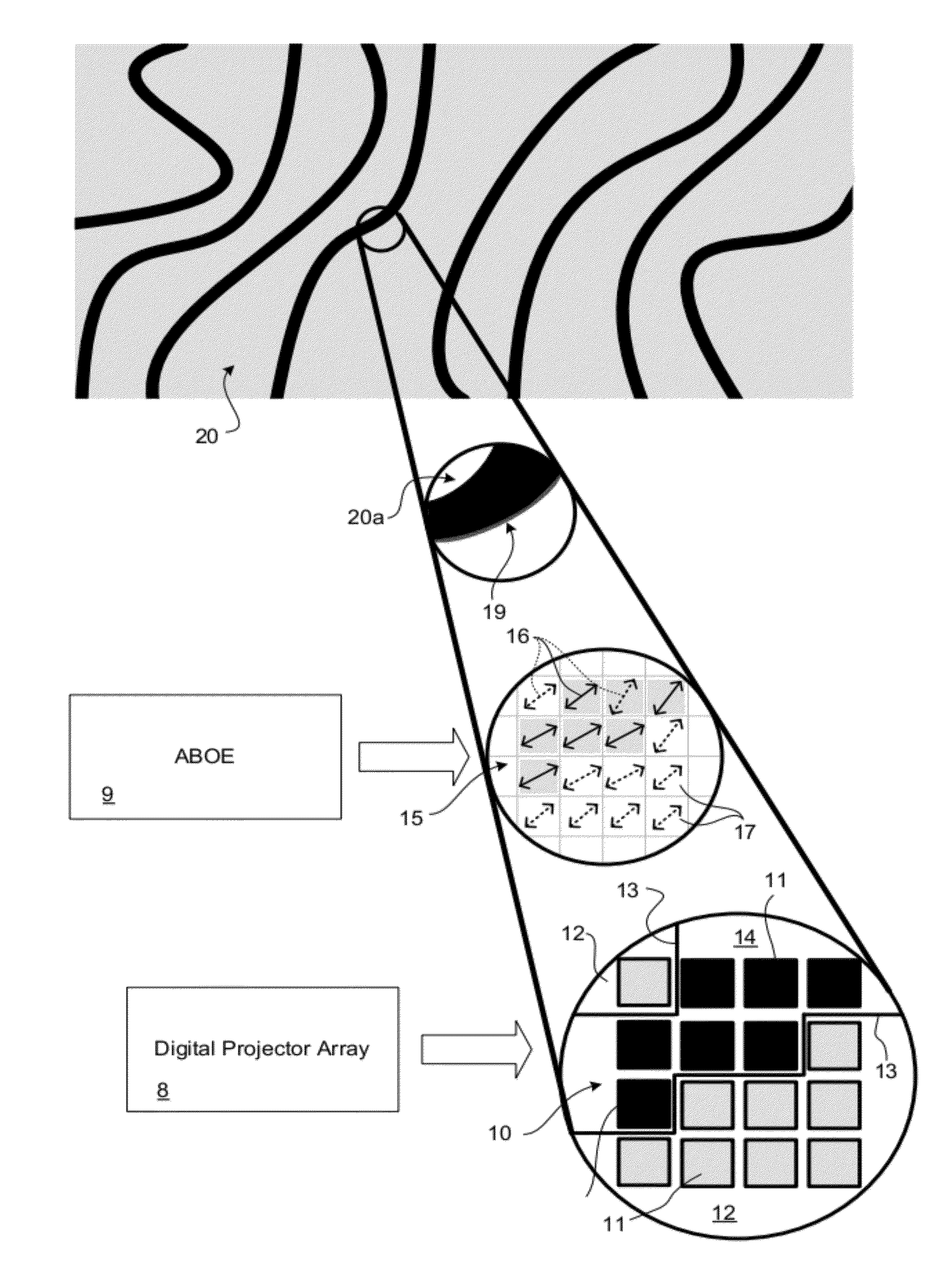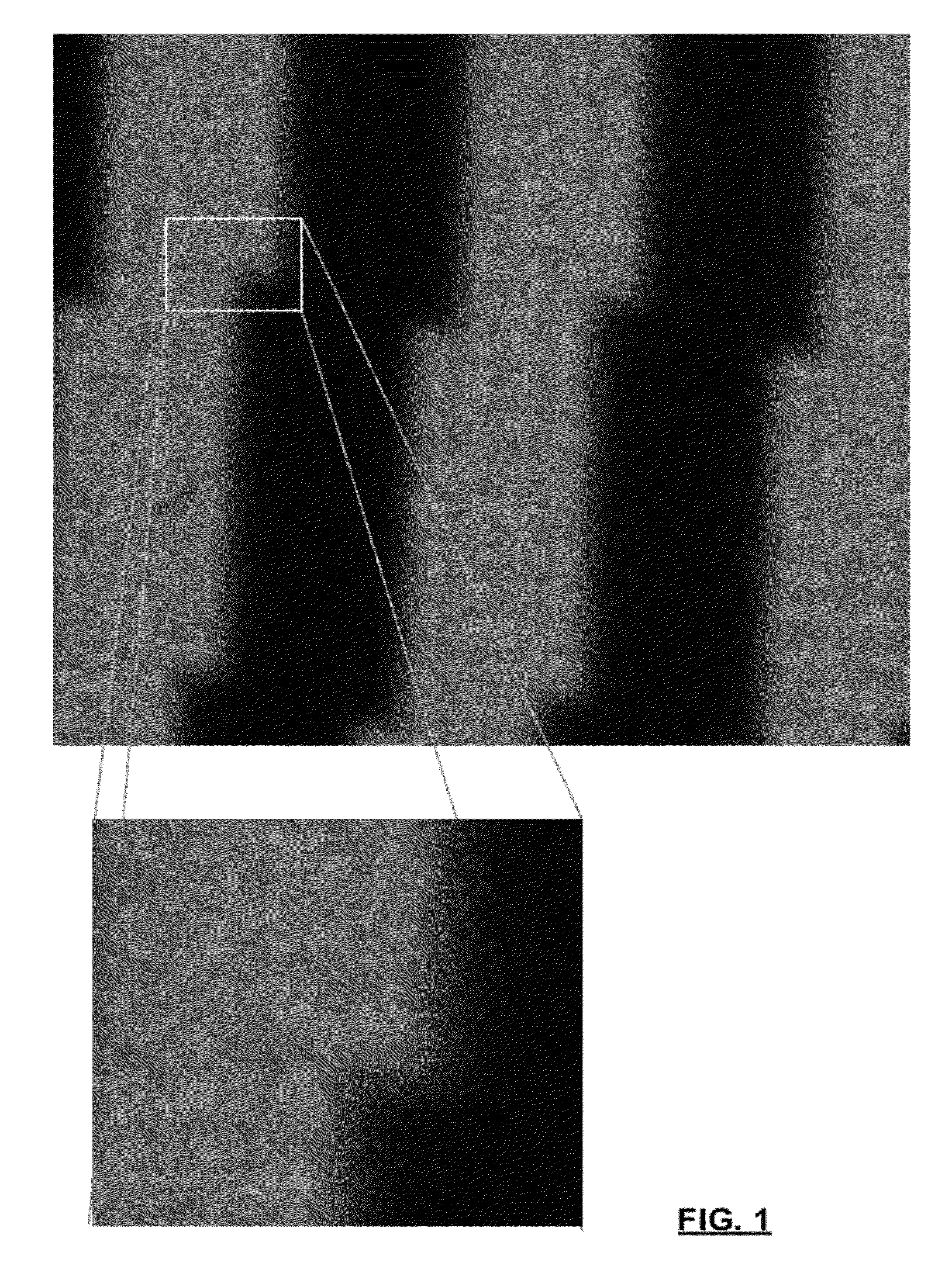High resolution high contrast edge projection
a high contrast, edge technology, applied in the field of high contrast edge projection, can solve the problems of expensive equipment for analog systems known in the art, and achieve the effect of low cos
- Summary
- Abstract
- Description
- Claims
- Application Information
AI Technical Summary
Benefits of technology
Problems solved by technology
Method used
Image
Examples
example
Lower Cost System (Prophetic Example)
[0051]A Projector: Proxima ultra light×350 which contains a digital video interface card and a DMD chip. For best results, a colour wheel of the projector can be removed, as this provides a brightest illumination. A convex cylindrical lens with a focal length of 150 mm can be placed in front of the projector at 4 mm from the projection lens, parallel with the projection lens. An angle between the cylindrical lens' axis and the edges of the DMD mirrors is chosen, for example to be other than 0-2°, 88-92° or 178-180°, such as 8°. A procedure for cycling through illumination image instructions and evaluating the projected images until optimal images are identified is performed to calibrate the system. Thereafter images with linear (skew from the pixel axes) by the 8° will be blurred to provide lines with edges that have much higher contrast and resolution than can be produced with blurred projections of the same projector.
Higher Quality Projection S...
PUM
 Login to View More
Login to View More Abstract
Description
Claims
Application Information
 Login to View More
Login to View More - R&D
- Intellectual Property
- Life Sciences
- Materials
- Tech Scout
- Unparalleled Data Quality
- Higher Quality Content
- 60% Fewer Hallucinations
Browse by: Latest US Patents, China's latest patents, Technical Efficacy Thesaurus, Application Domain, Technology Topic, Popular Technical Reports.
© 2025 PatSnap. All rights reserved.Legal|Privacy policy|Modern Slavery Act Transparency Statement|Sitemap|About US| Contact US: help@patsnap.com



